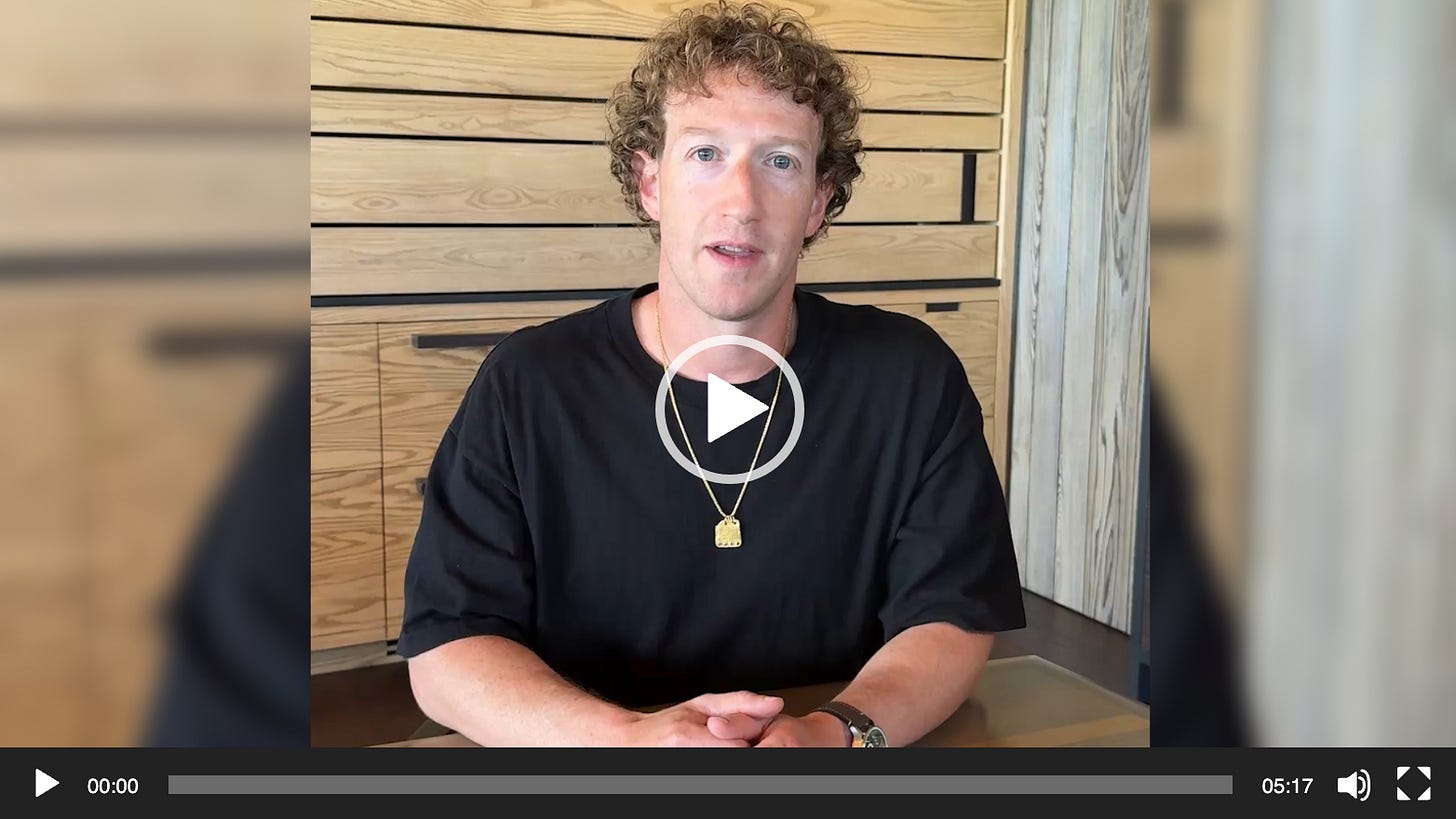And… we’re back!
It took a few days to get to first post of 2025, but it’s been a big start to the year, with several new clients kicking off and some extra time with the family before everyone headed back to school. However, the news certainly hasn’t been slow in the worlds of outdoor and media, so I’m deep in long-term planning for ZeroDraft — building lists of people to interview and brainstorming a few multi-post packages on the biggest trends coming in 2025. I’m always open to ideas and suggestions, so hit me up.
Finally, if anyone is in Denver on January 23, come check out the Martech Record conference and say hello. I’m hosting a panel on content marketing, affiliate and brand storytelling.
Niche vs. Reach
This week’s big media news is, of course, Zuck’s announcement that Meta is cutting its fact-checking efforts in an attempt to score points with the Trump administration. Community notes don’t seem to work, and it likely won’t be long until we realize that Zuck’s has gone full X style, and his free-speech commitment ends at criticizing whoever is in power at the moment.
Besides the stupidity of the announcement (Californian fact-checkers are biased, Texans aren’t!), this change reflects a larger trend. Facebook’s decline into a funhouse mirror world of AI-generated slop, QAnon conspiracy theories and organized political disinformation will likely accelerate migration away from Meta products. It’s the same effect we’re feeling with the looming TikTok ban, Google’s emphasis of Reddit, AI search reducing traffic to formerly mainstream sites and more.
It all adds up to a media ecosystem with fewer centers of gravity than ever. Just five years ago, any sport in the outdoor world would have had a few big media brands, and some dominant athletes leveraging a social media system driven by the popularity-first social-graph. There might have been one or two big film tours a year to gather the community.
That era is gone. Clear centralizing platforms and websites are losing their importance. Where do you go for a sense of the zeitgeist in the outdoor world? Is the conversation at Blue Sky similar to what’s happening in a Reddit chat about the same topic?
If the goal of the last media era was to hit a traffic home-run, the next phase of content strategy might well be how consistently you can hit singles and doubles.
Everywhere you look, you bump into arguments for a constellation of niche creators and communities replacing the media that have dominated the previous era.
This transition has serious implications to social cohesion, but it also presents real challenges for all of us operating in this media ecosystem. Here are some of the implications I’m thinking about going into 2025.
We need to adjust our definitions of success. I love seeing big reach numbers as much as anyone. It’s rewarding to report that a video hit a million views. But in this niche-first world, smaller view counts aren’t necessarily failures.
If the goal of the last media era was to hit a traffic home-run — the brand video with a million views — the next phase of content strategy might well be how consistently you can hit singles and doubles.
There’s a whole mathematical model to predict how the value of a network increases with the density of connections. A 100-person local run group in which every person is tightly connected to the others might be more valuable than thousands of people casually following one account.
Metrics must evolve too. We need to find ways to measure and report success across multiple platforms, communities and content channels.Micro-influencer is no longer a meaningful term. I don’t know how to think about a creator or a brand with a big audience and very low engagement compared to someone with 20,000 followers and a die-hard audience. Which is actually the micro-influencer? Who actually has influence, and to be honest, which gets more reach? I still think respected athletes and creators, for example, have incredible ability to break through the noise in a way that very few others can, but I’m less convinced that a “micro” audience equates to micro influence. And I’m strongly convinced that a big, but disengaged audience is not very valuable.
Pay attention to aggregators and curators. For decades, media brands were the aggregators and curators, hiring editors to spot trends, prioritize stories and package them for audiences. Today, those roles are increasingly filled by individual creators on TikTok, YouTube and Substack.
New aggregators are emerging, people who curate content and act as tastemakers for their communities. They don’t just create; they spot trends, find the best content and will be facilitators of communities.Mapping your communities. Since it’s increasingly difficult to identify a single center of the community, we’ll need to draw a much broader map of where the community lives, whether that’s a podcast, Substack, IRL events, movie tour and or as followers of key creators and athletes. We need to think deeply about where our communities are investing their attention, and figure out how to be in those places. That’s a much trickier proposition than a simple ad buy.
Build the team to handle niche and reach. As I talked about before, it’s time to stop thinking in siloed content channels. We’re going to have to get comfortable crafting stories that work across platforms and building measurement strategies that connect the dots between the places where the community gathers. We need to build content team infrastructures to handle a more complex reality.
I led with the idea of niche vs. reach, but maybe it’s really niche and reach. Maybe we get to reach by being deeply authentic within numerous niche areas, and by making compelling storytelling that has a chance to catch fire and jump into a broader audience.



Brilliant writing and insights Pat. "...Facebook’s decline into a funhouse mirror world of AI-generated slop.." Thanks